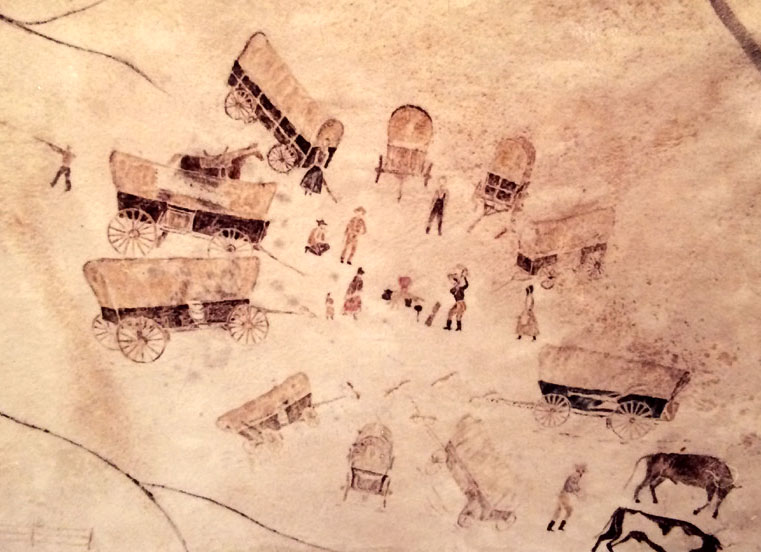Vision of Washakie
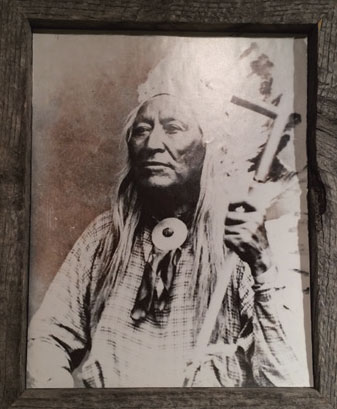
Washakie was probably born in Montana between 1798 and 1804. His father, a member of the Flathead tribe, was killed by the Blackfeet when Washakie was four or five. His mother, a Shoshone, took her young family to live with the Lemhis. By 1832, Washakie had joined the Bridger Valley Shoshone and quickly became a noted leader. His chieftainship began in 1843 and he eventually became a leader of most of the Shoshones.
By 1850, Chief Washakie had become very concerned with the encroachment of other Indian groups and non-Indians onto traditional Shoshone territory. Washakie went on a vision quest, fasting and praying for three days. The Great Spirit showed him the future. He saw white man making guns, but the Indians had disappeared. The Great Spirit told Washakie he could not fight the white man but instead the Shoshone would have to live peacefully with them. In the future Washakie could see the Iron Horse, carriages without horses, and men flying. He was told that eventually the blood of the Indian (red) and the blood of the white man (blue) would flow together and they would become one people.
As a leader, Washakie was noted for his peaceful nature and his help to the soldiers and settlers who came into his area.
Chief Washakie’s son, Dick, carried the story of the vision for many years. Another son, Charlie, painted the scenes on the elk skin in 1932. By this time the sons knew what Washakie meant by men flying and carriages without horses. On the robe one can view the events that took place in Chief Washakie’s life, from the past into the future of his people.
Chester F Slaugh’s father, Chief Agricultural Agent on the Wind River Reservation, commissioned Charlie Washakie to paint the hide in 1932.
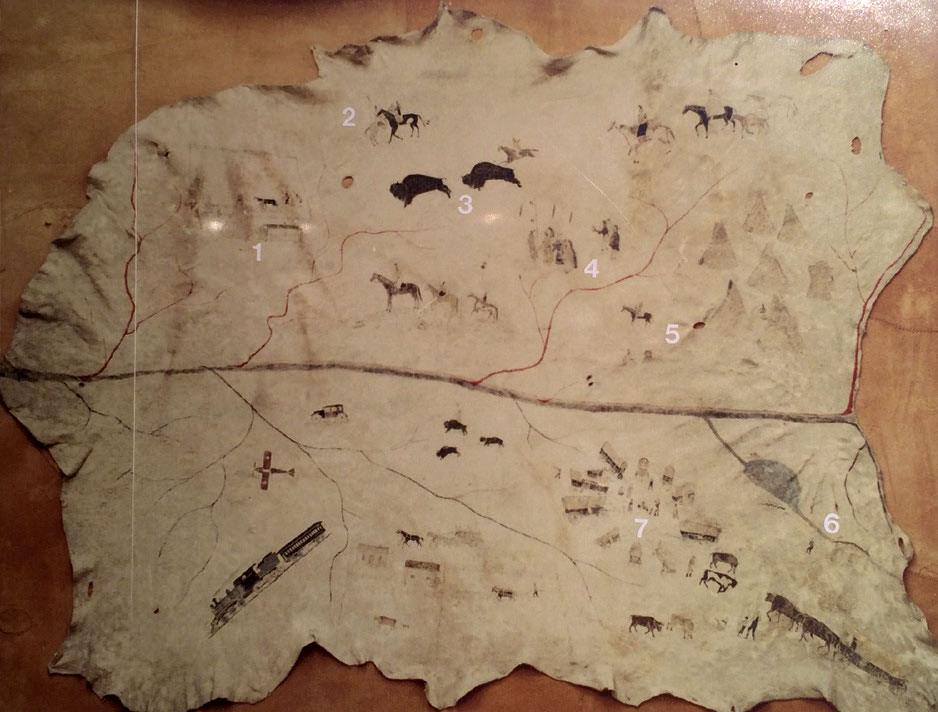
Cabin by tipi
“We will build houses by their houses and they will teach us to till the soil as they do.”
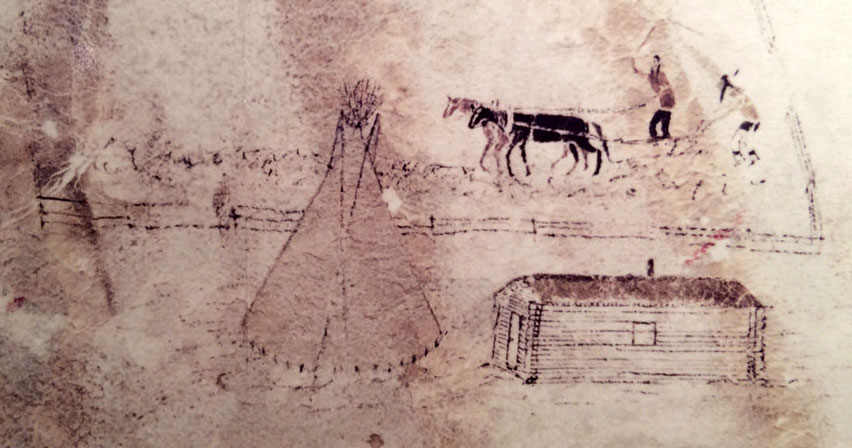
Two men on horseback, fighting
In March of 1866, the Shoshones waged a prolonged battle against the Crow for the right to hunt a certain area around Crowheart Buttes. At the end of four days the Crows abandoned their lodges. Seventeen or eighteen young Crows were captured, their heads shaven, and sent back to their tribe with information that they were too young to be killed. One of the young Crow girls captured eventually became Washakie’s wife. At the war dance after the battle, Washakie displayed a heart on his lance.
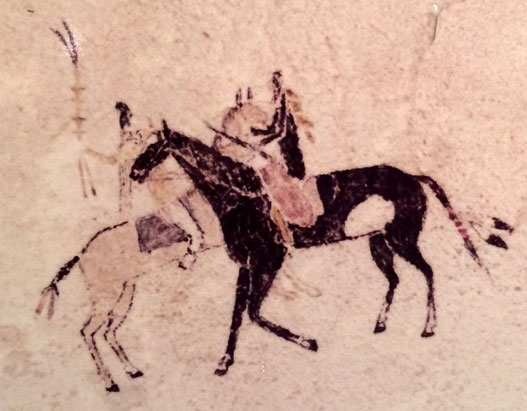
Buffalo hunt
After the Shoshones were settled on the reservation, it was their custom to make a long, extended buffalo hunt through the fall and winter. In 1874, Washakie sent runners to find the exact location of the buffalo. The herd was located and the signal to charge was given. Both guns and bows with arrows were used. All of the meat was put in proper condition for transportation and the camp moved to the location of another drive upon the buffalo herd. Camps changed almost daily. After the buffalo disappeared from Washakie’s territory, he gave up the annual hunt and devoted himself to the welfare of his people and to domestic and pastoral pursuits.
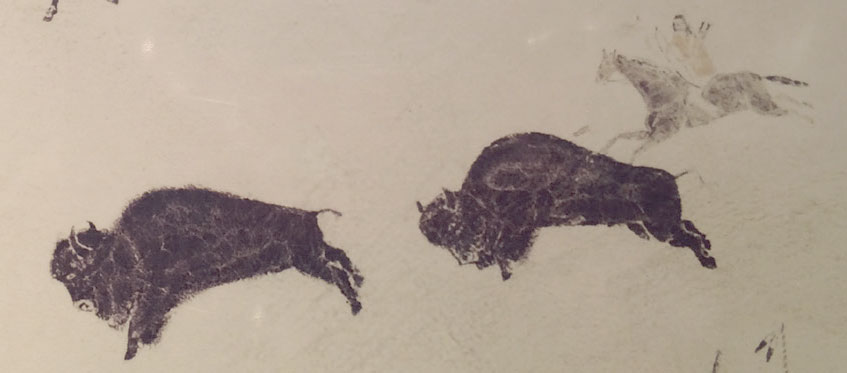
Scalp dance
On June 3, 1876, General Crook asked for Crow and Shoshone recruits to join in a campaign against the Sioux. Within four hours, 125 Shoshone warriors, including Chief Washakie, were on the way. The army met the Ogalala Sioux commanded by Crazy Horse in Rosebud country on June 17. The Shoshones were instrumental in the turn of the battle, forcing the Sioux to withdraw. The Shoshone returned quickly to the Wind River Reservation to display their scalps and to engage in a big scalp dance. Eight days later and eighteen miles away, General Custer suffered annihilation at the hands of the same enemy.
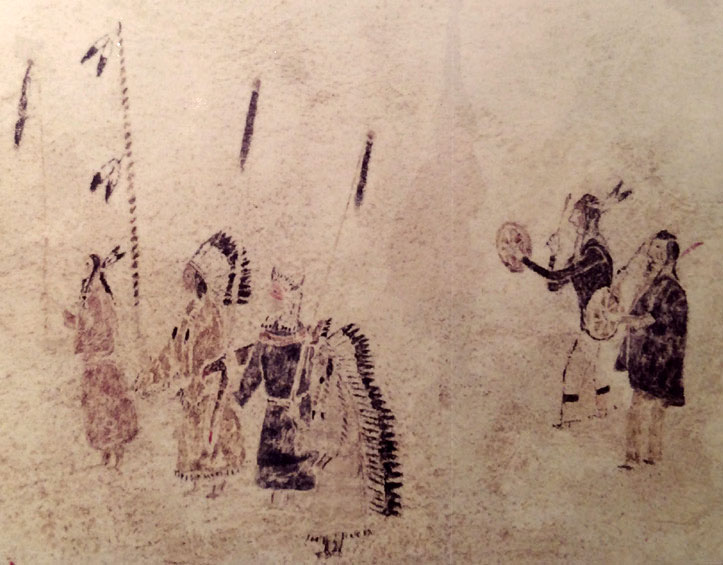
Tipi village and two men behind hill
“We saw in the distance a great many Blackfeet moving in their villages. We lay concealed behind a hill and watched them pass and saw them go into camp about two miles away. While we were watching, one man mounted. The man came toward us and I said, ‘Now keep still and we will cut him off.’ He came back on the road riding rapidly…I shot him with my gun…”
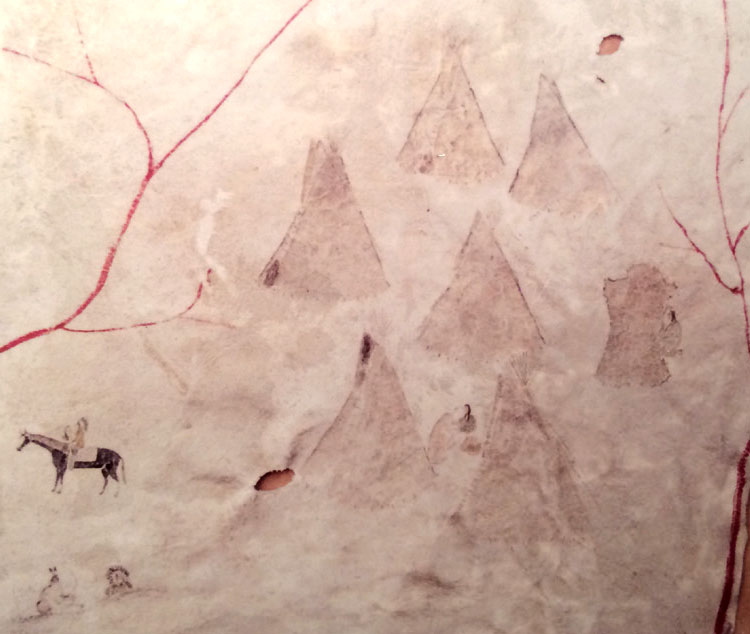
Log cabin
“The first white man seen by Washakie was a Frenchman who built a log house on the Green River and commenced trading with the Indians and at Fort Bridger.”
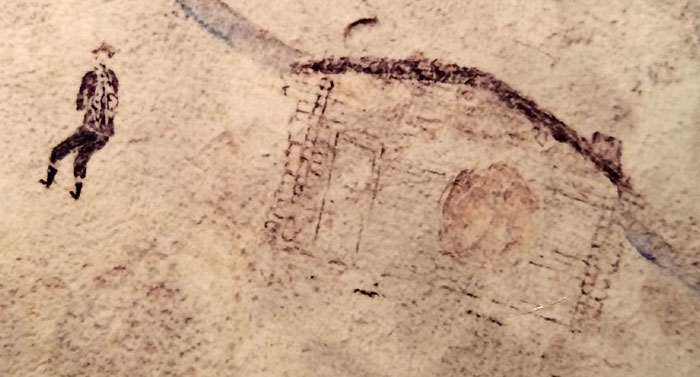
Covered wagons
Washakie set up patrols on the Oregon Trail from South Pass to Fort Bridger with orders to defend the wagon trains as well as helping them to cross fords and round up their stray cattle. The trains were seldom molested and 9,000 emigrants signed a testimonial addressed to Congress commending the tribe.
